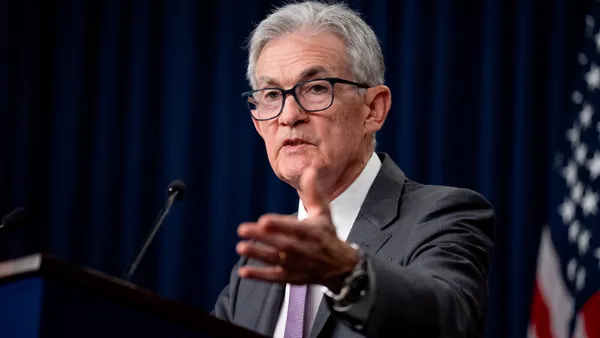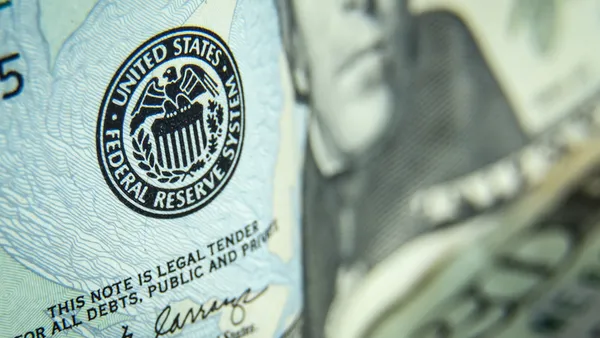Dive Brief:
- U.S. employers increased payrolls far beyond expectations last month, prompting investor predictions that the Federal Reserve will hold the main interest rate at the current level beyond a planned monetary policy meeting in May.
- The unemployment rate eased to 4.1% from 4.2% as the economy added 256,000 jobs, logging average three-month payroll growth of 170,000, the Labor Department said Friday. In a sign of sustained labor market stability, both the unemployment rate and labor force participation rate have moved in a narrow range for at least seven months.
- “The December jobs report was gangbusters,” Aditya Bhave, U.S. economist with Bank of America Securities, said in a client note. “Our base case has the Fed on extended hold,” he said, adding “risks for the next move are skewed toward a hike” in the federal funds rate.
Dive Insight:
Traders in interest rate futures responded to the biggest gain in hiring since March by increasing from 45% to 67% the probability that the Fed will hold the main rate at its current level beyond a two-day meeting ending May 7, according to the CME FedWatch Tool.
In second sign of fading investor expectations for monetary easing, the yield on the benchmark 10-year Treasury bond rose as high as 4.793% on Friday compared with 4.519% on Dec. 18, when policymakers trimmed the federal funds rate by a quarter percentage point to a range between 4.25% and 4.5%.
The Fed in three straight meetings late last year cut the main rate by a total of 1 percentage point.
“Worries about the risk of a sharp deterioration in labor market conditions back in September — when the Fed started cutting rates — have more or less evaporated and it seems pretty certain that the pace of Fed rate cuts is now going to slow down,” Fitch Ratings Chief Economist Brian Coulton said in an email.
Referring to the job market, Coulton said, “the picture looks broadly stable.”
The jobs report indicates that demand for labor is aligning with the number of people seeking work, Chicago Fed President Austan Goolsbee said after release of the data.
“It’s a strong jobs report,” Goolsbee said in a CNBC interview. “It makes me comfortable that the job market is stabilizing at something like a full employment rate,” he said, adding that the data is “not an indication of overheating.”
Policymakers cut borrowing costs last month despite signs that their nearly three-year fight to push down inflation to their 2% target has stalled.
Compared with their forecasts in September, Fed officials increased the median projection for the personal consumption expenditures price index at the end of 2024 to 2.8% from 2.6%, and for the end this year to 2.2% from 2%.
Meanwhile, long-term consumer expectations for inflation rose from 3.0% in December to 3.3% this month, according to Joanne Hsu, director of the University of Michigan’s consumer survey.
“This is only the third time in the last four years that long-run expectations have exhibited such a large one-month change,” she said in a statement Friday.
Also, consumer expectations for inflation during the coming year “soared from 2.8% last month to 3.3%” in January, Hsu said. “The current reading is the highest since May 2024 and is above the 2.3% to 3.0% range seen in the two years prior to the pandemic.”
Labor Department data on December wage gains — also released on Friday — should offer some reassurance to policymakers about price pressures, Coulton said.
“Amidst the recent uptick in inflation concerns, the Fed will take some comfort from the decline in monthly wage gains to 0.28%, month over month, from 0.37% in November,” he said, referring to Labor Department data.












